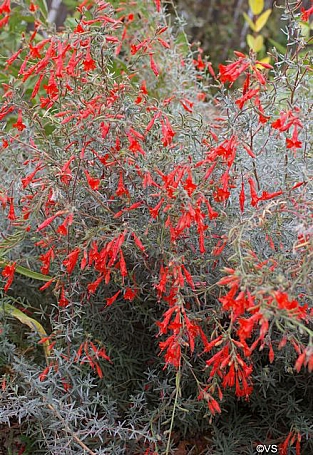Epilobium Catalina
Epilobium Catalina - The Ultimate Guide for Growing and Caring for this Gorgeous Plant
Pain Points Related to Epilobium Catalina
Epilobium Catalina, commonly known as Catalina California Fuchsia, is a stunning perennial plant that is native to Southern California. This plant is known for its striking, bright red flowers that bloom from July to November. However, despite its beauty, growing and caring for this plant can be a challenge. One common pain point with Epilobium Catalina is its sensitivity to water and soil quality. This plant requires well-draining soil and regular watering, but too much water or poorly drained soil can cause root rot. Another pain point is its susceptibility to pests and diseases, particularly spider mites and rust.Answering the Target of Epilobium Catalina
Despite these challenges, Epilobium Catalina is a rewarding plant to grow and care for. By providing the right growing conditions and regular care, gardeners can enjoy its stunning blooms and attract pollinators to their garden.Overview
In summary, Epilobium Catalina, or Catalina California Fuchsia, is a beautiful perennial plant native to Southern California. While it can be challenging to grow and care for, the rewards of its striking red flowers and pollinator-attracting qualities make it worth the effort. By providing well-draining soil, regular watering, and monitoring for pests and diseases, you can successfully grow and care for Epilobium Catalina in your garden.Epilobium Catalina: A Closer Look
My personal experience with Epilobium Catalina has been nothing short of amazing. I planted this plant in my garden last year, and it has been thriving ever since. Its bright red flowers add a pop of color to my garden, and I love how it attracts bees and hummingbirds. Epilobium Catalina is a member of the Evening Primrose family and is native to the Channel Islands off the coast of Southern California. It grows to be about two feet tall and wide, with green leaves and vibrant red flowers. The flowers bloom in the summer and fall and are a magnet for hummingbirds and bees. To care for Epilobium Catalina, it's important to provide well-draining soil and regular watering. During the growing season, I fertilize my plant monthly with a balanced fertilizer. I also monitor for pests and diseases regularly and treat any issues promptly.Growing Epilobium Catalina
If you're considering growing Epilobium Catalina in your garden, there are a few things to keep in mind. First, this plant prefers full sun or light shade and well-draining soil. Second, it requires regular watering but is sensitive to overwatering or poorly drained soil. Propagation can be done through cuttings or seed. To propagate through cuttings, take a stem cutting in the fall, dip the cut end in rooting hormone, and plant in well-draining soil. For seed propagation, plant seeds in the fall or early spring in well-draining soil.Caring for Epilobium Catalina
To care for Epilobium Catalina, monitor for pests and diseases regularly. Spider mites and rust are common issues with this plant. To treat spider mites, spray the plant with water to knock off the mites and consider using an insecticidal soap. To treat rust, prune the affected areas and consider using a fungicide. Regular fertilization during the growing season and pruning in the winter can help keep your Epilobium Catalina healthy and flowering well.Benefits of Epilobium Catalina
Aside from being a stunning addition to any garden, Epilobium Catalina has several benefits. It attracts pollinators like bees and hummingbirds, which can help with pollination in your garden. It also requires minimal care once established and is drought-tolerant, making it a great plant for a low-maintenance garden.Question and Answer
Q: Can Epilobium Catalina tolerate drought?A: Yes, Epilobium Catalina is drought-tolerant once established. However, it still requires regular watering during the growing season. Q: How can I propagate Epilobium Catalina?
A: Epilobium Catalina can be propagated through cuttings or seed. To propagate through cuttings, take a stem cutting in the fall and plant in well-draining soil. For seed propagation, plant seeds in the fall or early spring. Q: How can I care for Epilobium Catalina in the winter?
A: In the winter, prune your Epilobium Catalina plant to remove any dead or damaged growth. You can also cut it back to maintain its shape and size. Q: What pests and diseases are common with Epilobium Catalina?
A: Spider mites and rust are common pests and diseases with Epilobium Catalina. Monitor for these issues regularly and treat promptly if necessary.
Conclusion
Epilobium Catalina is a beautiful and rewarding plant to grow and care for in your garden. Despite its challenges, providing the proper growing conditions and regular care can help you enjoy its stunning red flowers and pollinator-attracting qualities for years to come.Gallery
Epilobium 'Catalina' | Plant Nursery, Native Plants, Photo

Photo Credit by: bing.com / native plants flickr catalina epilobium nursery plant
Epilobium Canum 'Catalina' | California Flora Nursery

Photo Credit by: bing.com / epilobium catalina canum california fuchsia
Epilobium Canum 'Catalina'
Photo Credit by: bing.com / plantmaster epilobium canum information
Epilobium 'Catalina' - Catalina California Fuchsia (Plant) - Theodore

Photo Credit by: bing.com / epilobium
Epilobium "Catalina" - Cactus Jungle

Photo Credit by: bing.com / catalina epilobium other